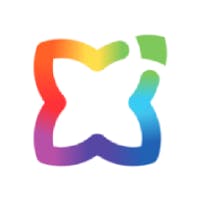In a future where our climate is breaking down and equity is still just a word for the majority of our fellow humans, we greatly need changemakers who feel empowered and know where and how to direct their skills, knowledge and focus to build a brighter future.
The sun has clearly set on production line education with dependent learners emerging into a world they were never truly prepared for. This is why autonomy is sometimes referred to as readiness, not as being prepared for specific trends of industry and employment, but for the broader spectrum of life’s challenges and opportunities.
In education, the term "autonomy" typically refers to the ability of learners to take control of their own learning. This process typically begins with Learning Guides providing directions and support, but it eventually leads to learners taking more responsibility for their own education.
Learner autonomy at Learnlife
What we at Learnlife mean when we say autonomy is much more about life than just about learning, because the two are not siloed apart.
Owning your mistakes and embracing the learning that comes from them. Speaking truth to power, and believing in your right to do so. Finding your place in the world and your right to occupy that space. Interacting with your community to achieve common and personal goals, knowing where you fit best in that process, where you might find and pursue new learning opportunities, and how you do that. This is autonomy.
At Learnlife we encourage learners to pursue the things that make them happy and keep their playful curiosity of spirit alive as they learn about the world, each other and themselves. That does not happen overnight, but it is built into the learning paradigm which evolves around each and every learner in our care.
The four stages of learner autonomy
There are four main stages of learner autonomy that most can agree on: dependence, independence, interdependence, and autonomy. These relate clearly to learning, but also to “life skills” in general. To be honest, we also do not quite see them as “stages”, meaning that they are clearly delineated, because while a learner might temporarily identify with one stage above the others, the seeds of autonomy are already being sown and grown.
In learning at the “dependent” stage, students rely heavily on educators for both direction and support. In broader life, by occupying that space, we are living reactively. We allow others to shape our next steps, and we risk falling into step along the paths of others, rather than finding our own.
This is where much of traditional education is to be found, where learning is heavily scripted, and any divergent pathways must always be funneled back through the same narrow and limiting assessments and judgements about who we are and what we are capable of.
As learners become more independent (but not yet autonomous), they begin to take more responsibility for their own learning, but they may still need some guidance from learning guides on how to do this.
In Learnlife, our learners in the Secondary Programmes move from Explorers to Creators to Changemakers, grouped not by age but by maturity and a decision made through self-reflection and feedback that they are ready to take the next step.
This movement and growth supports the stages of learner autonomy, with learners in control of setting their own goals, and moving at the pace that feels right for them. Speeding up might mean a breakthrough or realisation, rather than “rushing” the learning. Slowing down is about finding yourself, being reflective, seeking support and input, and not about “lagging behind”. Learner autonomy means the journey is personal, and competition only with ourselves.
The “interdependent” stage is not something we see as existing apart, but rather suffused throughout our learning environment.
The risk of supporting learners to develop autonomy is that they forget how and when to seek help and the voices of others. In Learnlife, learners work collaboratively with their peers, and they are always encouraged and supported to provide and receive feedback. Peers are resources for learning and growth, and knowing how and when to depend on or support others is a strength.
There are times when we want to bounce ideas off others, or build teams around a common goal, and there are times when we need to reflect, tinker or just be still. Learner autonomy is knowing that all of these have a time and place, and knowing when each is needed.
Finally, at the truly autonomous stage, learners are fully self-directed and capable of independent learning. Autonomous learners typically set their own goals, create their own learning plans, and assess their own progress.
Though some might typically associate this with the Changemaker programme, where learners pursue their interests and passion largely at their own direction, the fact is that setting our own goals is something we support far earlier. Self-reflection and independent goal setting is part of the Learnlife DNA, and while not every learner is ready to do that on day one, we start building towards it from that moment.
The steps to learner autonomy are not linear, despite the attempt to categorise them as stages which one must pass through in sequence. In truth, the path to autonomy is something for which we can co-create the right conditions, but not prescribe too rigid a structure.
We believe that everyone has the right to determine how their own life looks, and rather than simply talk about it, we decided to truly support that outcome with an environment and approach that helps learners discover their own voice, agency, power, passion and pathway.
Learner autonomy does not mean going it alone, but knowing how to get there together, come what may.
If you want to learn more about Learnlife, watch our video that summarises how we learn at Learnlife and nurture learner autonomy and personal learning.


